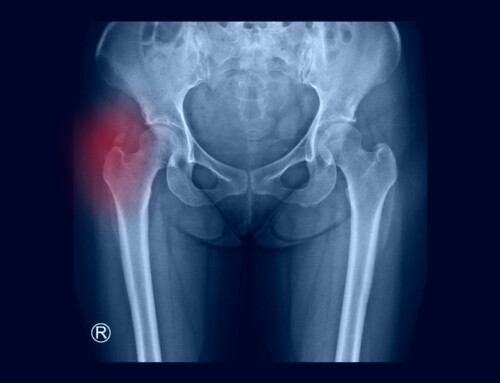by Christine DiVirgilio, SPT
PT After A Total Hip Replacement
Anatomy of the Hip
The hip is the junction where the leg and the trunk of the body come together to form a joint. The hip joint consists of two bones, the thighbone also known as the femur and the acetabulum of the pelvis, which is comprised of 3 bones called the ischium, pubis, and ilium. The acetabulum is the articulating surface is a cup-like depression that includes the acetabular labrum which deepens the cavity.
The hip joint is held together by ligaments and cartilage which include ligament of the head of the femur, iliofemoral ligament, pubofemoral, ischiofemoral, and articular cartilage called the acetabular labrum. The anatomy of the hip joint allows for multidirectional movements including flexion (bending), extension (straightening), abduction (bringing legs apart), adduction (bringing legs together), internal rotation (twisting inward), and external rotation (twisting outward).
What is a THA?
A Total Hip Arthroplasty (THA) also known as a Total Hip Replacement (THR) is one of the most common, cost-effective, and most successful orthopedic surgical procedures. The purpose of this type of procedure is to replace the joint between the pelvis and the femur with a prosthetic implant (metal or ceramic) to replace the diseased, damaged, or ankylosed (stiffening) hip joint. The implant allows for the joint to be more mobile to relieve pain, improve quality of life, and to restore function.
Indications for THA
THA are indicated for patients who have attempted conservative treatment without success and/or had a previous surgical intervention for worsened hip joint who continue to have persistent debilitating pain causing a decrease in function. Additionally, the most common indication for a THA is end-stage symptomatic hip osteoarthritis. Osteoarthritis (OA) is a degenerative condition of the cartilage that develops slowly and worsens overtime causing the cartilage to thin and the surface of the joint to become rougher. The wearing down of the cartilage causes the joint space to become bone on bone contact which is the cause of pain, swelling, and stiffness.
How can Physical Therapy Help?
Rehabilitation for Total Hip Arthroplasty
Individuals who receive THA surgery would benefit from receiving physical therapy prior to surgery to maximize patient’s functional status. Many studies have found that with the addition of a prehabilition prior to surgery has improved postoperative outcomes and reduces complications or joint failures.
Prehabilition usually consist of exercises to improve mobility and strength in the muscles surround the hip joint, patient education on post-operative precautions, assistive device training, and activity modifications.
Post-Operative Precautions
After surgery there are 3 types of approaches the new prosthetic joint is implemented which changes the different hip precautions that will be implemented. The surgeon will instruct you on which precautions to follow and the time frame of how long to follow these precautions.
Posterior Approach (most common)
- No bending your hip more than 90 degrees
- No rotating your hip inward (twisting)
- No crossing your legs across your body beyond neutral
Anterior Approach (least common)
- No swinging your leg out to the side
- No crossing your legs across your body beyond neutral
- No bringing your leg backwards behind your body
- No rotating your hip outward (twisting)
- No laying on your stomach
Anterolateral Approach
- No swinging your leg out to the side
- No crossing your legs across your body beyond neutral
- No bringing your leg backwards behind your body
- No rotating your hip outward (twisting)
Post-operative Rehabilitation
Immediately post-op you will spend 1-2 days in the hospital where physical therapy will focus on getting out of bed and walking the same day of surgery. Most patients will be discharged home post-op, however with more complex cases they may require a short stay in a rehab facility.
After being discharged for the first 6 weeks after discharged from the hospital physical therapy will focus on improving range of motion, restoring muscle strength, endurance training, normalizing functional mobility and normalize gait pattern.
For more information on physical therapy for total hip arthroplasty program and prehabilition may be able to help prior to your hip replacement, to help with hip and lower back pain, or to make an appointment for an evaluation or treatment, contact us at one of our NY Capital Region physical therapy clinics. Call us at 518-289-5242 or contact us online.






